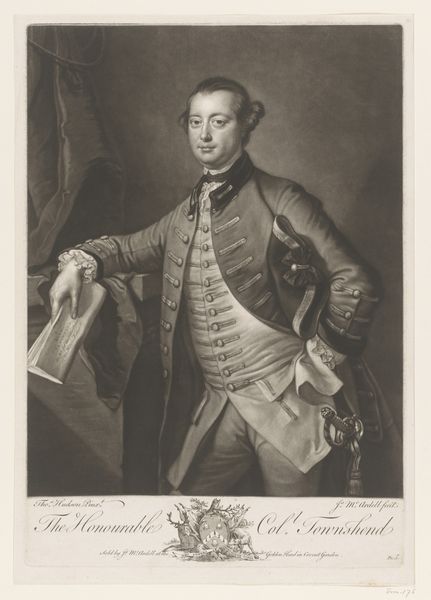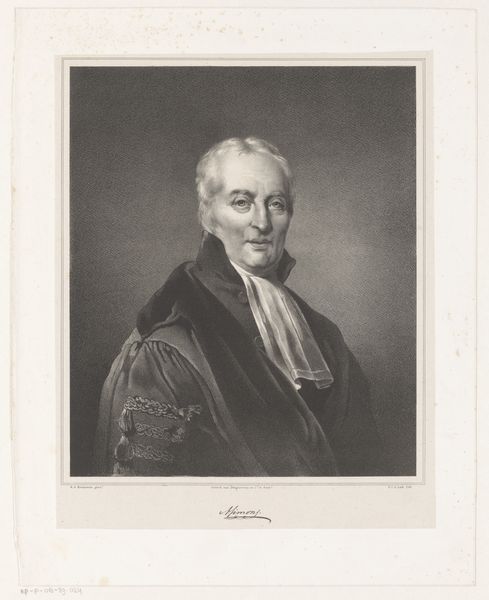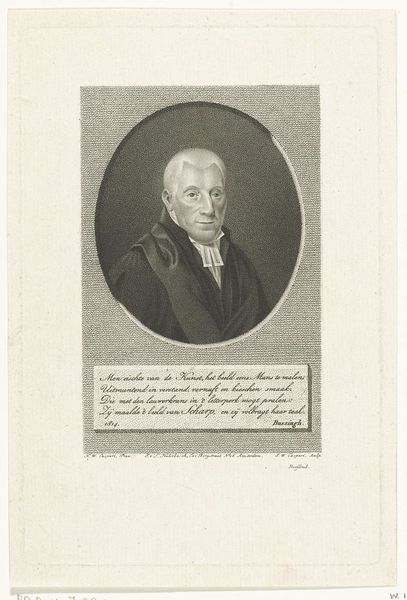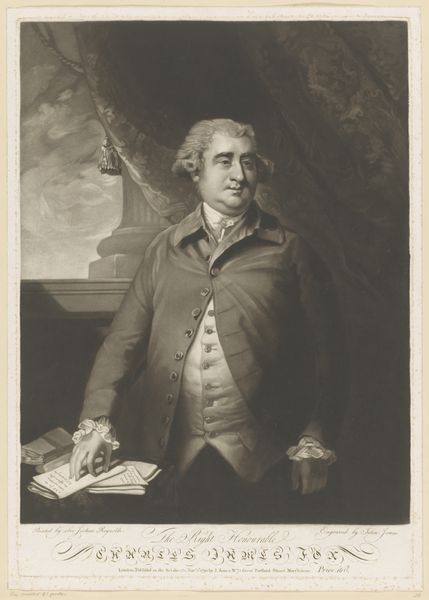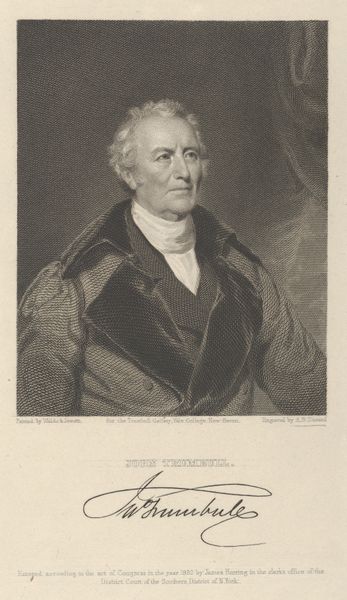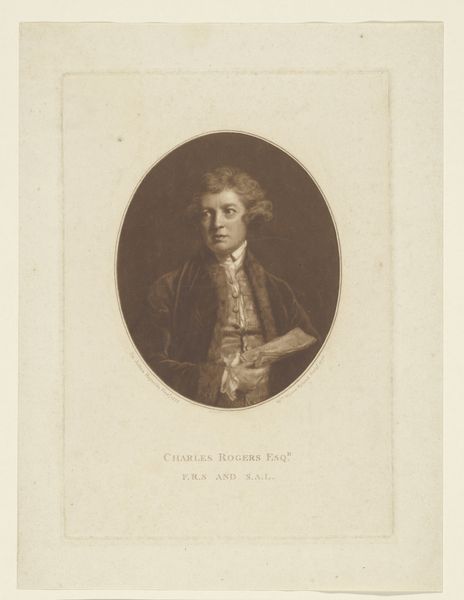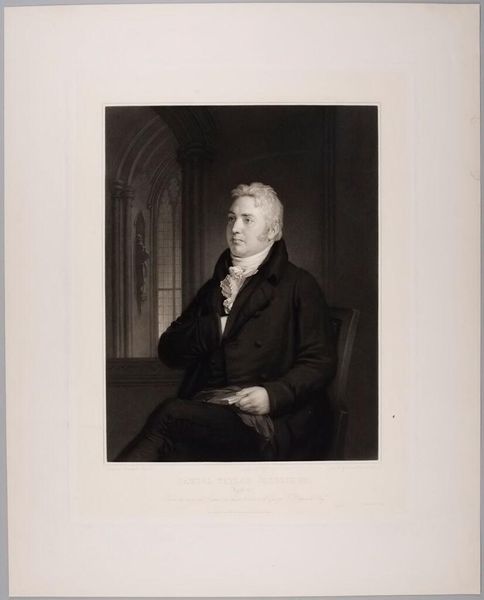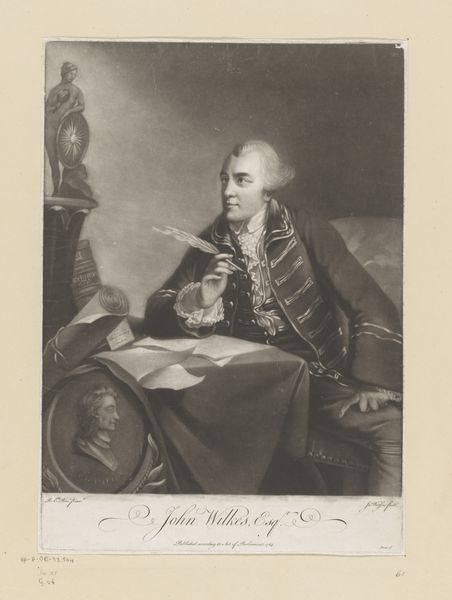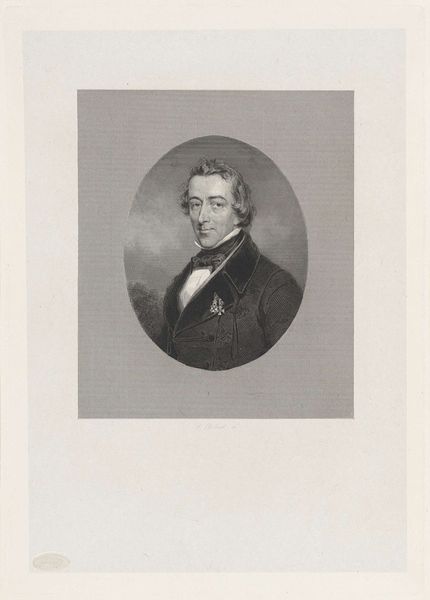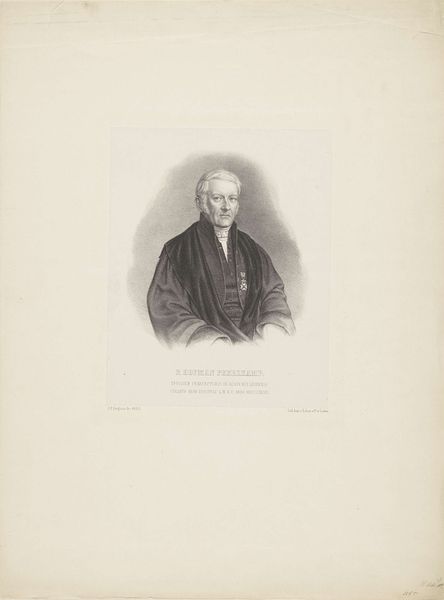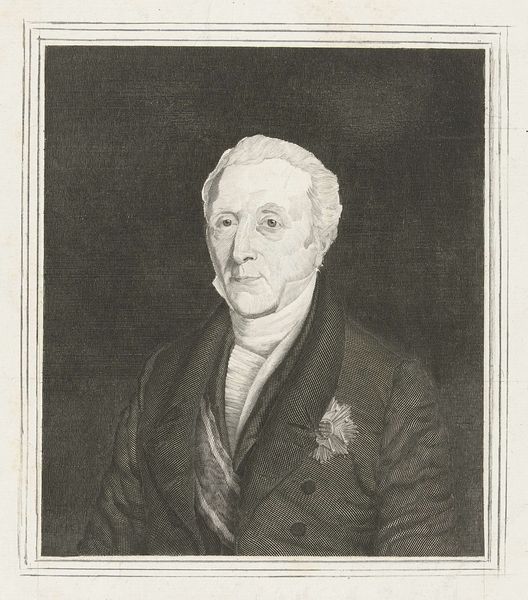
engraving
#
portrait
#
neoclacissism
#
historical photography
#
history-painting
#
academic-art
#
engraving
Dimensions: height 490 mm, width 354 mm
Copyright: Rijks Museum: Open Domain
Curator: Welcome to this closer look at "Portret van Willem IV Hendrik, koning van Engeland" by Henry Edward Dawe. The piece is likely from between 1827 and 1829 and executed in engraving. Editor: The portrait has a rather stately, albeit somber mood. The shading and pose make it seem both formal and intimate. There's a remarkable contrast in textures – the velvety coat against the softer background fabric. Curator: Precisely! Dawe successfully uses Neoclassical and Academic art principles to communicate authority and intelligence, reflecting the social norms of the time. The book he holds seems a tool to project intellectual sophistication, common amongst members of high society. Editor: Symbols certainly abound. Note the star-shaped medallion – a symbol of rank and order but one that serves as a visual focal point against the muted color palette, reinforcing a hierarchy of visual and social elements. Curator: Indeed. The symbols create an aura of power, reflecting the king’s identity but, simultaneously, universal themes of status, ambition, and, inevitably, mortality. Dawe skillfully connects a specific person with larger symbolic meanings. Editor: From a purely formal viewpoint, notice how the sharp, clean lines contrast the smooth tonality. The precision with which the fabrics are rendered contrasts beautifully with the subtly illuminated face. It leads to a composition full of restraint, despite its subject’s status. Curator: Absolutely. The painting goes beyond simply capturing an image. The symbolic objects surrounding him show the expectations that come with ruling – projecting both wisdom and leadership. Editor: In summary, while Dawe employs formal composition and tonal contrast, its enduring impact rests on a clever use of culturally symbolic cues to convey social significance. Curator: It serves as a rich historical emblem – connecting viewers to the complex tapestry of 19th-century social and psychological symbols, one powerfully woven into Dawe’s composition.
Comments
No comments
Be the first to comment and join the conversation on the ultimate creative platform.

